Perverse Families & Dysfunctional Kids
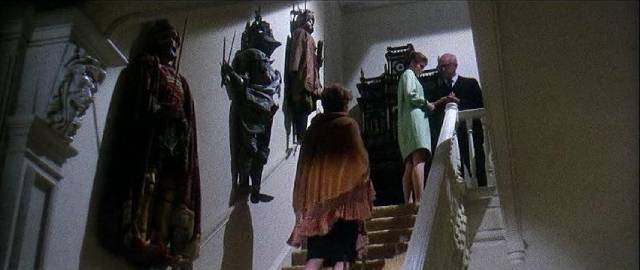
Families can be dangerous places. Small units which have distinct internal dynamics quite apart from each individual’s connections with the larger community in which the family exists. Each family has its own secrets and rituals, obscure and confusing to outsiders, who, not knowing the codes and rules, enter at their own risk. All of us are shaped by these strange social constructs, whether we fully absorb their shared worldview or eventually reject it and break away. No wonder the family is such fertile ground for storytelling … and no wonder so many horror narratives bloom there.
I recently watched four movies which revolve around such secrets and mysteries, each in its own way and each leading to the death(s) of insiders and/or outsiders.
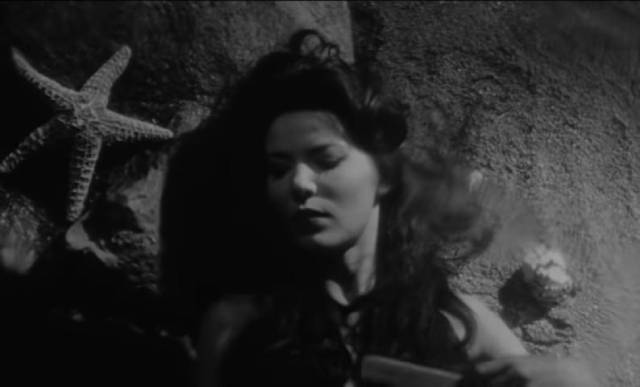
Curtis Harrington
Curtis Harrington had a long, strange career. He developed an early interest in film when he was given a camera as an adolescent. Merely recording events in home movies quickly evolved into more creative work, and he made a number of experimental shorts in the 1940s and ’50s. These belonged to a well-established tradition, echoing what people like Maya Deren (one of his mentors) and Kenneth Anger were doing. In fact, Harrington became involved with Anger, even appearing in Inauguration of the Pleasure Dome (1954). He also, along with Anger collaborator Marjorie Cameron, became involved with Thelema, the occult tradition started by Aleister Crowley in the early 20th Century.
Dissatisfied with the limited possibilities of experimental filmmaking, Harrington made a decision in the late ’50s to move into narrative, hoping for a wider audience and some actual commercial success. But even so, his first feature looks back at the dreamlike imagery and editing rhythms of his experimental work even as it moves forward in terms of storytelling, character and more accessible themes.
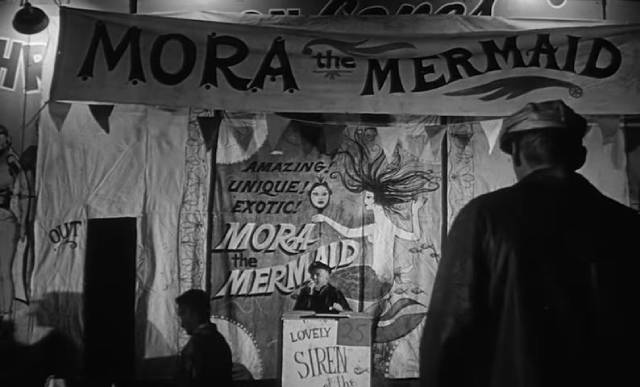
Night Tide (1961)
Night Tide (1961) at first glance is a horror film, but its very distinctive tone makes it more of a poetic fable. Johnny Drake (Dennis Hopper), a young sailor on leave, encounters a mysterious woman named Mora (Linda Lawson) in a rundown sideshow on a dilapidated pier. Displayed in a tank, she appears to be a mermaid, but after closing time, she’s just a woman whom he becomes attracted to. The feeling is mutual, but there’s something holding her back … she, and the old sea captain Samuel Murdock (Gavin Muir) who owns the show, eventually tell the sailor that she is indeed a mermaid, rescued by the captain from a remote island and raised as his ward.
The problem is mermaids are dangerous to human lovers – word is that several young men have died after becoming involved with her – and the more deeply she feels for the sailor, the more afraid she is of doing him harm, so afraid in fact that she finally sacrifices herself to save him. Only in the story’s coda does he learn the truth – that the paternal protectiveness of the captain made him invent the whole fantastic story to prevent her leaving him … and that his plan was all too successful, convincing his ward that she was indeed a mermaid and lethally toxic to men.
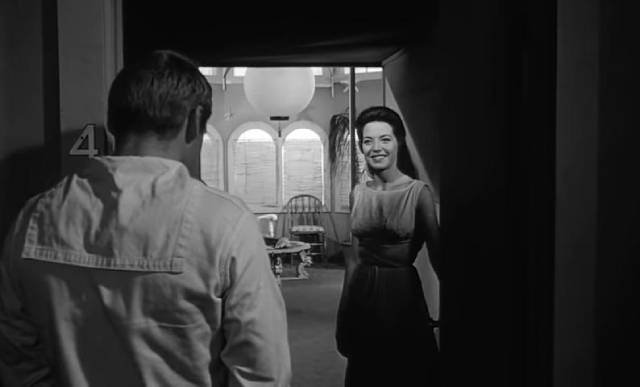
The sailor’s naive intrusion into this strange family’s isolated existence triggers in reality the fantastic horrors the captain has invented in order to hold the world at bay and keep the girl with him.
Shot in lush black-and-white on visually striking locations in and around Venice, California, Night Tide is a fascinating experimental-commercial hybrid, its oneiric imagery drawing the viewer in even as it resists providing the more familiar thrills of a contemporary horror movie; if anything, it hearkens back to the films Jacques Tourneur directed for Val Lewton in the ’40s.
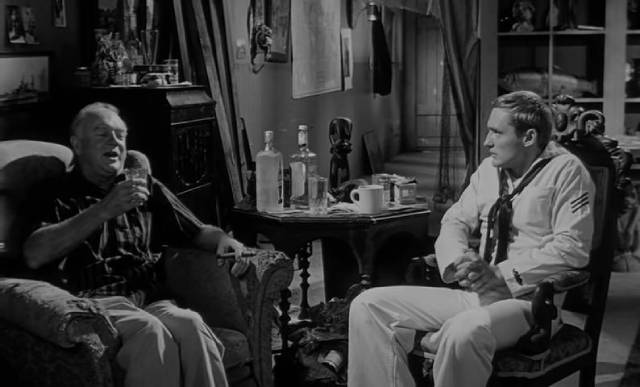
Indicator’s limited edition release contains two Blu-rays in a sturdy slipcase along with an 80-page book of essays, including extensive writing by Harrington, plus a set of facsimile lobby cards.
The first disk features a spectacular 4K restoration from the original (damaged) negative. The image is noticeably improved over the previous Kino Blu-ray. All the extras from the Kino disk are included – commentary by Harrington and Hopper, career-spanning conversation between Harrington and David Del Valle – plus an additional half-hour interview with Harrington and a new commentary by Tony Rayns.
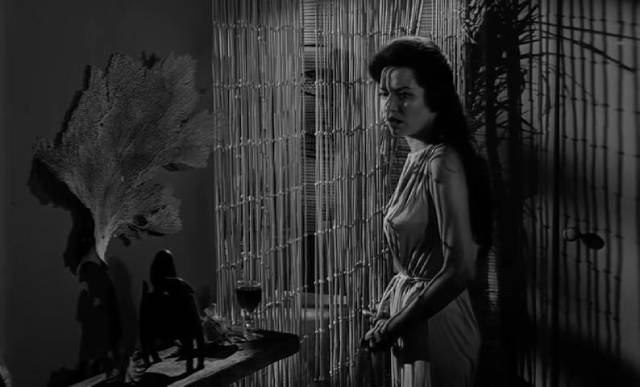
The second disk contains hi-def restorations of eight of Harrington’s experimental shorts, from his teenage version of The Fall of the House of Usher (1941) to his final film, 2002’s Usher, an opulent retelling of the same story in which Harrington himself plays famous poet Roderick Usher as well as his sister Madeleine. These shorts reveal an artist at odds throughout his career with the commercial imperatives which constrained the majority of his features. It’s hard to reconcile the experimental artist with the guy who made Voyage to the Prehistoric Planet (1965) and Queen of Blood (1966) for Roger Corman or a string of made-for-TV horrors – The Cat Creature (1973), Killer Bees (1974), Devil Dog: The Hound of Hell (1978) – and episodes of Dynasty and The Colbys.
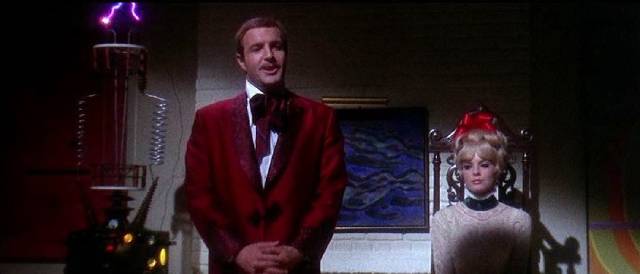
in Curtis Harrington’s Games (1967)
Games (1967)
Although Harrington continued to direct – mostly for television – until the late ’80s, his most fertile period was from the mid-’60s to early ’70s, culminating in What’s the Matter With Helen? (1971), Who Slew Auntie Roo? (1972) and The Killing Kind (1973). But between the Corman movies and those three features, he made one of his most creatively successful commercial films: Games (1967).
Obviously drawing on a well-established tradition, Games evokes Hitchcock and Clouzot in its story of a decadent wealthy couple, Jennifer (Katherine Ross) and Paul Montgomery (James Caan), who stave off boredom by playing elaborate games – throwing parties for their wealthy friends at which they engage in elaborate role playing involving esoteric ideas in which science and magic blend together. Spectacle gives way to something more sinister when Lisa Schindler (Simone Signoret), a middle aged immigrant woman, arrives at the house claiming to be an acquaintance of an old friend of the family. This turns out to be a con just to get her in the door, after which she tries to sell expensive cosmetics to Jennifer.
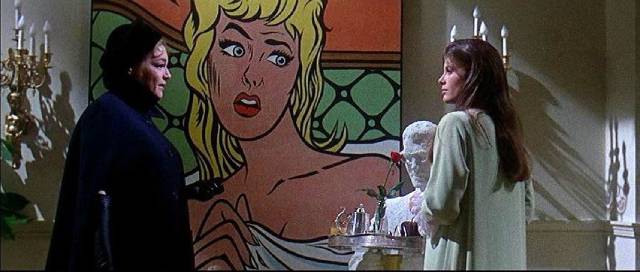
Taken in by the woman’s sad story – having lived through the Holocaust and come to the States, she is struggling to survive – and her physical collapse, Jennifer invites her to stay and rest, but Paul is suspicious and doesn’t want her in the house. But Lisa quickly insinuates her way into their lives, conjuring up new games for them to play. These escalate into malicious pranks designed to inspire shock and fear, culminating in the “accidental” killing of a delivery man.
Paul manages to convince Jennifer that nobody will believe this was an accident, so the couple try to conceal the death from Lisa and a nosy neighbour – this lengthy section generates suspense laced with Hitchcockian humour, while as the ensuing narrative unfolds it more directly references Clouzot’s Les Diaboliques (a connection reinforced by the presence of Signoret). With the sudden turn from games to a more serious reality, what we thought we knew about Paul and Jennifer’s relationship – and Lisa’s identity – is revealed to be wrong. The games set in motion by Lisa expose secrets which were hidden from the couple themselves as well as the audience … and by the end other layers have been stripped away, exposing even more deadly secrets.
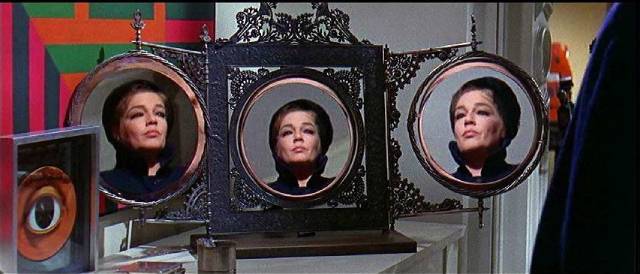
If Harrington learned anything practical from his work with Corman, it wasn’t limited to the basics of crass exploitation. Games is a sophisticated, well-made psychological thriller, crafted with style but none of the artiness evident in Night Tide. This was the film in which Harrington left behind the lingering traces of his experimental work. For the next half decade, he worked in the psychological thriller genre, edging towards camp in What’s the Matter With Helen? and Who Slew Auntie Roo? (with the latter returning to the fairytale quality of Night Tide, though with less subtlety), before becoming a television director-for-hire. Having begun as an idiosyncratic and independent artist, it looks as if Harrington largely repressed his natural inclinations to accommodate the needs of a marketplace which had little time for a talent like his.
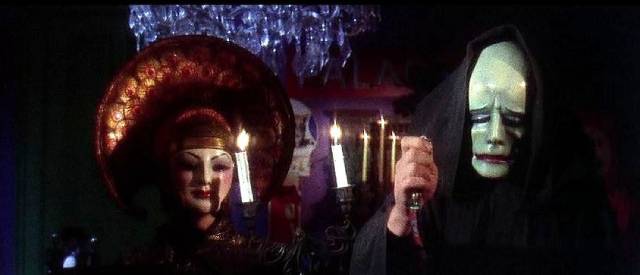
Perhaps that’s why his final film, Usher, seems so satisfying – it was his one opportunity since those early days where he was completely free to do what he wanted, a hothouse orchid of a movie, steeped in a languid air of perversion and unselfconscious camp.
The Shout! Factory Blu-ray offers a decent widescreen transfer of this visually moody, even sombre film, but there are unfortunately no extras.
*
These two features by Curtis Harrington may seem rather tangential to the point I started making above. In Night Tide a young sailor becomes tragically involved with a young woman whose life has been blighted by her surrogate father’s obsessive attempts both to protect and possess her; in Games, the complicity of a privileged young couple in the games they play at others’ expense conceals deeper, more destructive secrets which they hide from each other.
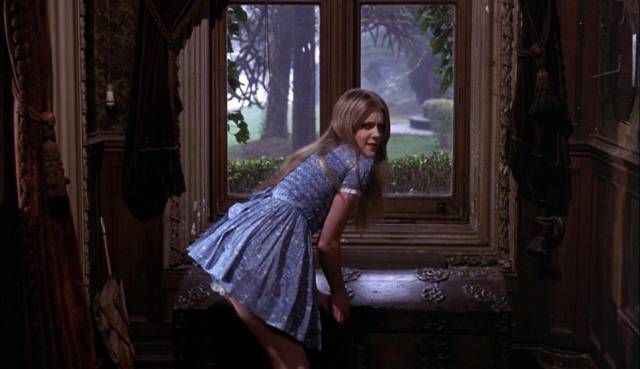
in Freddie Francis’ Mumsy, Nanny, Sonny & Girly (1970)
Matriarchy and male anxiety
Two other movies, from the early 1970s, plunge fully into the destructive potential of the family, exploring the perverse dynamics of parent-child connections and the dangers arising from outsiders penetrating the protective secrecy that isolates families from the society which surrounds them. Perhaps reflecting the rising influence feminism, both films depict matriarchal clans which pose a threat to men and their traditional power; both lack male authority figures – not simply absent fathers; absence implies that something necessary is missing, but here there’s simply no place for men other than as playthings or victims.
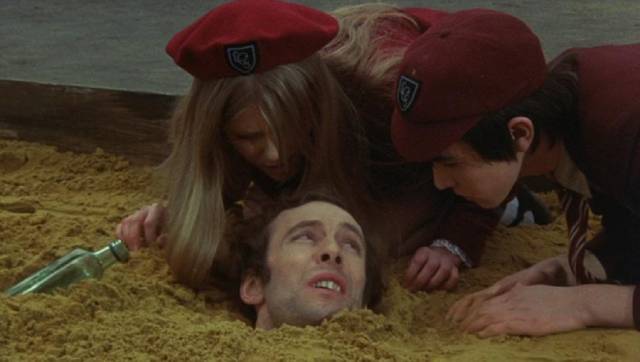
Mumsy, Nanny, Sonny & Girly (Freddie Francis, 1970)
Freddie Francis, an amiable if often uninspired director, was in the middle of his diversion from a brilliant career as one of Britain’s finest cinematographers when he made perhaps his best feature, the atypical and idiosyncratic Mumsy, Nanny, Sonny & Girly (1970). Unlike most of his features, this doesn’t fit clearly into a well-established genre groove. Based on a play by Maisie Mosco, the adaptation was the first of four notable scripts by Brian Comport – the others being Pete Walker’s Man of Violence (also 1970), Robert Hartford-Davies’ Beware My Brethren and Peter Newbrook’s The Asphyx (both 1972). Francis gives it a cheerful surface which only gradually reveals the darker undertones.
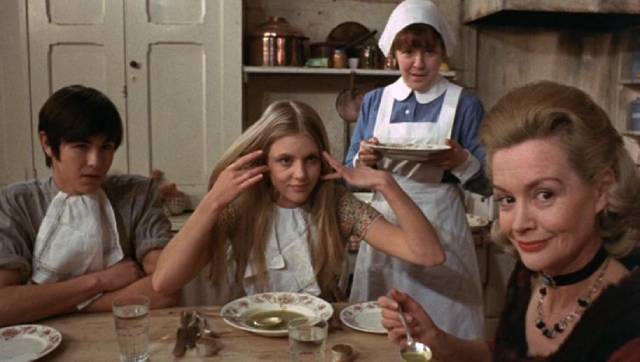
At first, the tone is difficult to grasp clearly. A young man and woman, dressed disconcertingly in school uniforms which make them look younger than they are, emphasizing an immaturity which becomes even more disconcerting as the sexuality underlying their behaviour becomes apparent, are wandering around a zoo park. Their play reveals hints of an incestuous connection. Finding a couple of derelicts asleep on park benches, they choose one, give him a drink from a bottle and invite him home to the mansion they share with Mumsy and Nanny, two cheerful women who view the “children” with amused indulgence.
The derelict, fed tea and cakes – along with some strict rules of conduct – sensing that he’s being mocked by his social betters, is suspicious and a little hostile. Forced to play children’s games under the watchful eyes of Mumsy and Nanny, he finally balks, rejecting their demands that he join in. His punishment for bad manners is death.
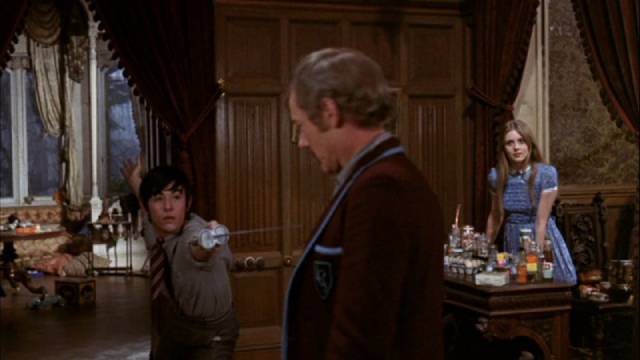
Sonny and Girly go in search of a new playmate, settling on a drunken middle class couple leaving a suburban party. They end up in a playground where an “accident” on a slide leaves the woman dead and the man in shock and confusion. When he sobers up, he finds himself in the family mansion, dubbed New Friend. Confused and guilty – the kids have convinced him that he was responsible for the fatal accident – New Friend plays along with the unsettling family rituals.
Like the Guest in Pasolini’s Teorema, New Friend sees an opportunity to seduce everyone in the household (though without the homosexual element), starting with Girly. Jealousy creates fractures in the insular family set-up, leading to the deaths of Sonny (who resented his sister’s obvious sexual attraction to the interloper) and Nanny (who resented Mumsy’s sexual engagement with him and the feeling that she herself was being left out). Mumsy and Girly come to a truce, agreeing to share New Friend between them, although they both know that they’ll eventually get bored and have to dispose of him like his predecessors. Having overheard them, New Friend settles in to enjoy the arrangement while preparing to dispose of them before they get him.
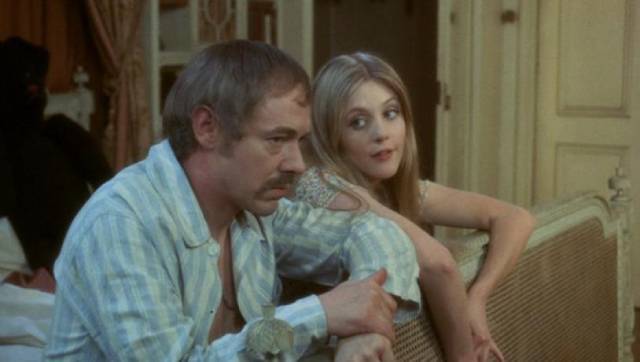
The movie’s strengths are the way Francis maintains the cheerful, brightly coloured childishness as he gradually peels back the layers of perversion and violence to expose the deadliness which sustains the family and, more particularly, the quality of the performances. Ursula Howells and Pat Heywood as Mumsy and Nanny are a dual portrait in the twisted indulgence of the privileged who dote on their children’s play no matter how socially destructive it is. Michael Bryant is watchful and intelligent as the outsider who navigates the dangerous family waters and finds ways to benefit himself. And best of all is Vanessa Howard as Girly, who combines immaturity with a powerful sexual allure; although physically adult, her manner adds a queasy air of paedophilia to New Friend’s “seduction” of her (despite believing in his own dominant masculinity, he is actually being manipulated by her).
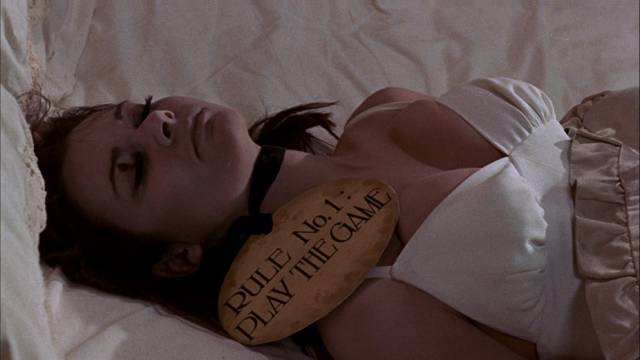
Perhaps the weakest link is Howard Trevor as Sonny, who can’t quite escape the caricature of an obnoxious public school boy which was long a mainstay of British comedy.
The Scorpion Blu-ray has a gorgeous, pristine transfer and includes a half-hour interview with scriptwriter Comport, though sadly the half-hour audio interview with Freddie Francis from their earlier DVD has not been carried over.
*
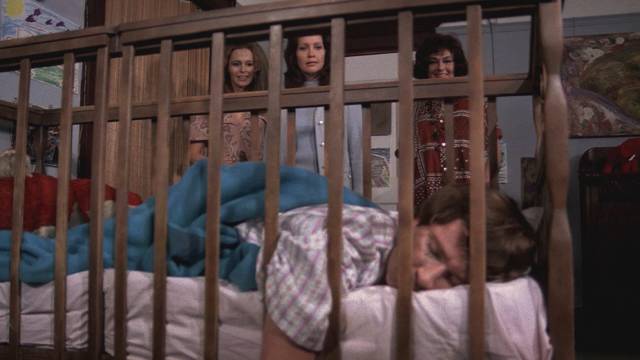
in Ted Post’s The Baby (1973)
The Baby (Ted Post, 1973)
Even more perverse is Ted Post’s The Baby (1973), a real oddity in the career of a director best known for movies like Hang ’em High (1968), Beneath the Planet of the Apes (1970) and Magnum Force (1973) – male-centred stories full of action and violence. I knew nothing about this movie until its release on Blu-ray – from Severin in 2014 and Arrow in 2018 – and only recently got around to picking up a copy of the Arrow disk. Frankly, what little I had heard made it seem kind of trashy and with the presence of Ruth Roman, thirty years into a long (mostly television) career, another belated entry in the hag horror genre niche. So when I finally did watch it I was surprised at how well it was written and directed, and more surprised at just how unsettling it actually is.
A social worker named Ann Gentry (Anjanette Comer) arrives at a big old house and announces that she’s taking over the case of the family’s son. She receives a chilly reception from Mrs. Wadsworth (Ruth Roman) and her two daughters, Germaine (Marianna Hill) and Alba (Susanne Zenor). Ann explains that she particularly asked to be put on the case … but it’ll be some time before we understand her real motives.
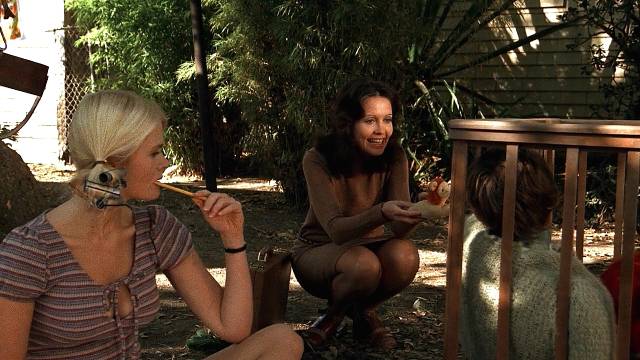
Insisting that she see the son, she’s taken upstairs to a room decorated like a nursery where a physically adult man lies asleep in a large crib, dressed in little more than a diaper. This is “Baby” (David Manzy) – Mrs. Wadsworth explains that he has no other name – who has not developed mentally or physically from infancy; he can’t stand or walk or speak.
Unlike previous case workers, who would just check in a couple of times a year, Ann starts visiting every couple of days, insisting that with care and attention Baby can probably be taught to walk and talk. The implicit criticism of Mrs. Wadsworth in this creates immediate tension and the film becomes a battle of wills between the two women. We’re obviously on Ann’s side – Mrs. Wadsworth seems more concerned with the on-going financial assistance she gets, which appears to be the family’s sole source of income, while Ann appears to be driven by an altruistic desire to help the son. And yet, there are hints of something else – conflicting references to something tragic involving Ann’s husband who at different times is referred to as dead or recovering from an accident.
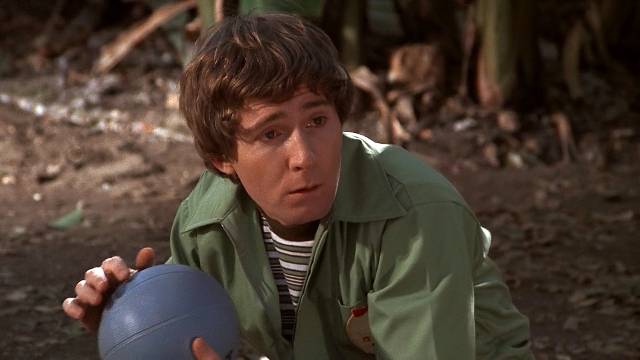
Mrs. Wadsworth complains to Ann’s boss with accusations that her interest in Baby is perversely sexual; Ann counters with accusations of abuse. Although she doesn’t have hard evidence, the viewer is in no doubt because by this time we have seen Alba using a cattle prod on Baby to enforce his infantilization because he had been caught standing up with Ann’s help … a violation of his role in the family. We’ve also seen Germaine sneaking into his room at night to use him for incestuous sexual pleasure.
Ann’s analysis of the situation is quite correct: Baby, the third of Mrs. Wadsworth’s children by three separate fathers, was born after her husband abandoned her and since birth he has been kept in that infantile state because of her anger and disgust with men in general, an attitude she has instilled in her daughters. When Ann manages to abduct Baby from the house, we see it as a necessary rescue from a horrific situation. We also know how dangerous her action is because it’s obvious that a previous case worker who suddenly disappeared was killed by the Wadsworths and they plan the same fate for Ann.
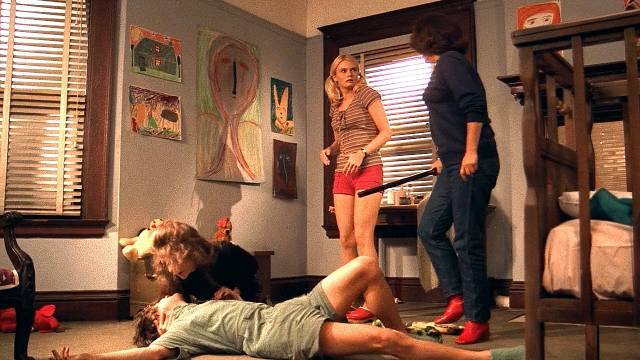
But once Baby is away from his family prison, we finally understand why something has seemed off about Ann’s own behaviour – she has planned all along to possess Baby herself, wanting him as a live-in playmate for her husband, a man himself reduced to an infantile state by a brain injury sustained in a car crash for which Ann was responsible.
The Baby takes place in a world dominated by strong-willed women who strip men of all authority, and particularly sexual power, maintaining them in a permanent state of infantile helplessness. It’s a darkly comic nightmare conjured from the uncertainty felt by men who saw the power of feminism as a threat to their own dominant position in a society which had long kept women suppressed.
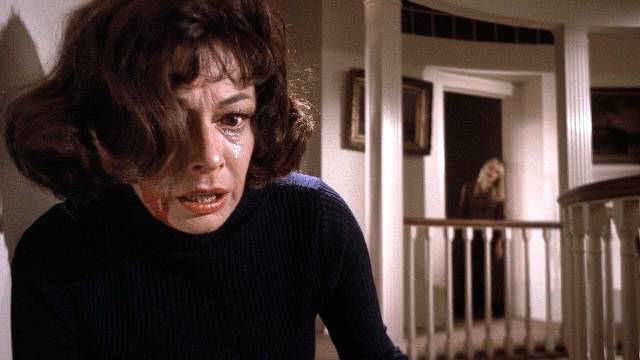
The theme may be reactionary, but the quality of the script by producer Abe Polsky and the vigour of the performances by the four lead actresses make for a hugely discomfiting black comedy, all the more disturbing for the enthusiastic performance by Manzy as Baby. It’s a sign of the freedom made possible by the collapse of the Production Code and the control of the studios that something so full of transgressive elements could be made by industry insiders rather than rebellious newcomers … and that everyone involved would approach it without any indication that they felt they were condescending to trashy material.
Arrow’s Blu-ray image is bright and colourful – and unnecessarily presented in both the theatrical 1.85:1 ratio and an open-matte 1.33:1 transfer. There’s a commentary from Travis Crawford, archival audio interviews with director Post and actor Manzy, and on-screen interviews with Marianna Hill, artist Stanley Dyrector who painted the artwork on the nursery walls, and film professor Rebekah McKendry. The booklet has an essay by Kat Ellinger.
Comments